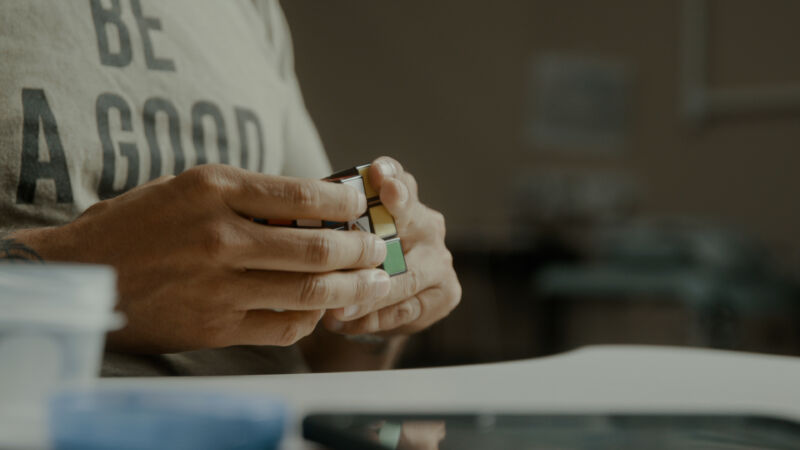Non-invasive zaps to the spinal cord can treat paralysis—but no one knows why

Enlarge / Trial participant Sherown Campbell manipulating a Rubik's Cube. (credit: UP-LIFT Trial)
With a zap of electricity from well-placed electrodes on the back of the neck, patients with tetraplegia can regain some modest yet potentially "life-changing" functioning of their hands and arms, according to data from a small clinical trial published Monday in Nature Medicine.
The relatively simple stimulation method-which requires no surgery-offers an accessible and more affordable non-invasive means for those living with paralysis to regain some meaningful function, the researchers behind the trial say. However, the therapy's further potential remains limited given that scientists have yet to fully understand exactly why it works.
For the trial, 60 patients with tetraplegia underwent the stimulation therapy over at least 24 sessions during a two-month period. At the end, 72 percent (43 patients) saw clinically meaningful improvements in both strength and functional performance. Further, 90 percent (54 patients) saw improvement from at least one strength or functional outcome. There were no serious adverse events reported.